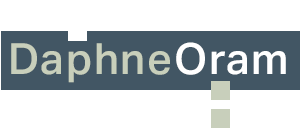The Oramics Machine
A long-term project in her private studio, Oramics is a drawn sound technique that involves drawing directly onto 35mm film stock.
Shapes and designs etched into the film strips are read by photo-electric cells and transformed into sounds. According to Oram, “Every nuance, every subtlety of phrasing, every tone gradation or pitch inflection must be possible just by a change in the written form.”
The Oramics technique and the flexibility of control over the nuances of sound was an altogether new and innovative approach to music production. Financial pressures meant it was necessary to maintain her work as a commercial composer, and her work on the Oramics system covered a wider range than the Radiophonic Workshop. She produced music for not only radio and television but also theatre, short commercial films, sound installations and exhibitions. Other work from this studio included electronic sounds for Jack Clayton’s horror film The Innocents (1961), concert works including Four Aspects (1960), and collaborations with opera composer Thea Musgrave and Ivor Walsworth.
Oramics machine displayed at the Science Museum, London (2011)
In February 1962, she was awarded a grant of £3,550 (equivalent to £76,000 in 2019) from the Gulbenkian Foundation to support the development of the Oramics system. A second Gulbenkian grant of £1,000 was awarded in 1965. The first entirely drawn-sound composition using the machine, entitled “Contrasts Essonic”, was recorded in 1963. As the Oramics research evolved, Oram’s focus turned to the subtle nuances and interactions between sonic parameters. In this phase of Oramics, she applied her sound research to the non-linear behavior of the human ear and to perception of the brain’s apprehension of the world. She used Oramics to study vibrational phenomena, divided into “commercial Oramics” and “mystical Oramics.” In her notes, Oram defined Oramics as “the study of sound and its relationship to life.”
In the 1980s Oram worked on the development of a software version of Oramics for the Acorn Archimedes computer using grant money received from the RVW (Ralph Vaughan Williams) Trust.[3][21] She wished to continue her “Mystical Oramics” research, but a lack of funding prevented this project from being fully realized.
Throughout her career, Oram lectured on electronic music and studio techniques. Her book, An Individual Note of Music, Sound and Electronics (1971), investigates the physics of sound and the emergence of electronic music in a philosophical manner. A new edition was published in December 2016.
